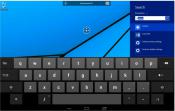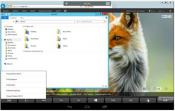Microsoft releases Remote Desktop app for Android and iOS
Posted by: Jon Ben-Mayor on 10/18/2013 09:33 AM
[
 Comments
]
Comments
]
Microsoft has rolled out a remote desktop app for use on Android and iOS devices that allows users to connect to a remote PC while going about their day.
The Microsoft Remote Desktop app, which is available at Google Play and iTunes App Store, uses up the whole screen to display the remote Windows desktop, save for the Android panel on tablets. The apps seems to work seamlessly on both Windows 8 touch and desktop modes and supports multi-touch gestures, presuming your Android device supports multi-touch.
It does seem to make use of Windows 8′s own keyboard rather than the native Android keyboard when text input is required. But more than just a remote desktop control, the app also allows access to remote resources via the Remote Desktop Gateway that heavy users of Microsoft’s remote desktop services would be familiar with.


The Microsoft Remote Desktop app, which is available at Google Play and iTunes App Store, uses up the whole screen to display the remote Windows desktop, save for the Android panel on tablets. The apps seems to work seamlessly on both Windows 8 touch and desktop modes and supports multi-touch gestures, presuming your Android device supports multi-touch.
It does seem to make use of Windows 8′s own keyboard rather than the native Android keyboard when text input is required. But more than just a remote desktop control, the app also allows access to remote resources via the Remote Desktop Gateway that heavy users of Microsoft’s remote desktop services would be familiar with.


Comments





